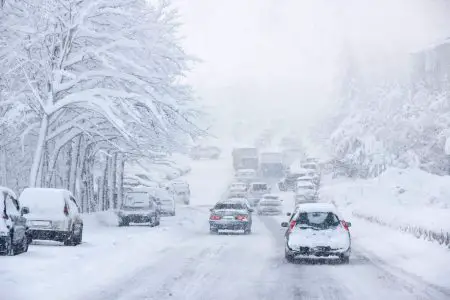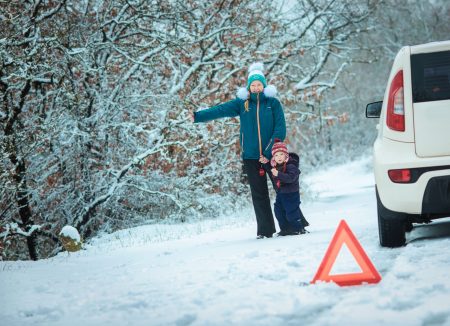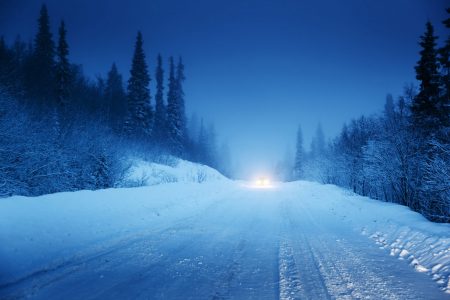Snow Emergency Levels
I was recently driving through Ohio and heard that there was a level 1 snow emergency in the area. I hadn't ever heard of a snow emergency level before so I did some digging and this is what I came up with.
What is a snow emergency level? Ohio Attorney General Opinion 86-023 and Attorney General Opinion 97-015 give the sheriff of a county the ability to declare a snow emergency and temporarily close county, township, state and municipal roads in order to preserve the public peace. There are three levels of snow emergencies that can be declared.
Snow emergency levels can impact your travel. Knowing how to react when roads are under a snow emergency can even save your life!
[wc_toggle title="Table of Contents" padding="" border_width="" class="" layout="box"]
Ohio's Snow Emergency Levels
Snow emergency levels are a way for local sheriffs to keep the public safe during times where a severe snowstorm has made the roads unsafe. It's a tool given to them by Ohio Attorney General Opinion 86-023 and Attorney General Opinion 97-015.
They can declare a snow emergency on any county, township, state and municipal roadway under their jurisdiction.

Level 1 Snow Emergencies
Roadways are hazardous with blowing and drifting snow. Roads may also be icy. Motorists are urged to drive very cautiously.
Vehicles may be fined or towed if they are not removed from designated snow emergency routes. A sustained snowfall of 2-4 inches can cause a level one snow emergency to be declared.
What Should You Do During a Level 1 Snow Emergency
You can continue to drive during a level 1 snow emergency, but the roads will likely be bad.
- Stay home unless you need to go somewhere.
- Plan for your drive to take longer than it usually would.
- Do not park alongside streets or roadways with signs prohibiting parking during a snow emergency.
- Pack extra water, food, and blankets in your vehicle in case you get stuck.
Level 2 Snow Emergencies
Roadways are hazardous with blowing and drifting snow. Roads may also be very icy. Only those who feel it is necessary to drive should be out on the roads. Contact your employer to see if you should report to work. Motorists should use extreme caution.
Schools and some businesses do not operate during a level two snow emergency. A sustained snowfall of about 4-8 inches can cause a level two snow emergency to be declared.
What Should You Do During a Level 2 Snow Emergency
Driving is legal during a level 2 snow emergency, but it's highly recommended that you try to stay off the roads.
- Contact your employer to see if you need to come to work.
- Schools will be closed, so plan accordingly if you have children.
- Make plans to work from home if you can.
- Stay off the roads unless you really have to drive somewhere.
- Plan for any driving to take significantly longer than it normally would.
- Pack extra water, food, and blankets in your vehicle in case you get stuck.
Level 3 Snow Emergencies
All roadways are closed to non-emergency personnel. No one should be driving during these conditions unless it is absolutely necessary to travel or a personal emergency exists. All employees should contact their employer to see if they should report to work. Those traveling on the roads may subject themselves to arrest.
Only police, medical, and emergency vehicles should be on the roads. Drivers can be fined or arrested if found driving on public roadways in a non-emergency situation. If a Level Three Snow Emergency is declared when students are at school or when a public building is open, officials will attempt to provide food and drinkable water to those affected.
A sustained snowfall of about 8-14 inches can cause a level three snow emergency to be declared.
What Should You Do During a Level 3 Snow Emergency
Stay off the road unless it's an absolute emergency. It's illegal to drive during a level 3 snow emergency.
- Stay off all roads until the snow emergency is lifted or reduced.
- Only drive if it's a life and death emergency.
- Do not leave the house (even in an emergency) without extra water, food, and blankets in your vehicle. If you're stuck, it may take a long time before someone finds you or can get to you.
- Ignoring a level 3 snow emergency can result in a ticket or even arrest!
If you're driving during a level 3 snow emergency you can be charged under Ohio Revised Code Section 2917.13, “Misconduct at an emergency” or other laws.
"Misconduct at an emergency" is a misdemeanor of the 4th degree, punishable by a jail sentence not to exceed 30 days and/or a fine not to exceed $250. If the misconduct creates a risk of physical harm to persons or property, it is a misdemeanor of the 1st degree, punishable by a jail sentence not to exceed 180 days and/or a fine not to exceed $1,000.
It's just better to stay at home!
Finding Current Snow Emergency Information
Unfortunately, according to the Ohio Department of Transportation, a central website doesn't exist to find all declared snow emergencies. You can get some info on ODoT's site, but that doesn't mean that there aren't more counties with snow emergencies.
The best way to find out what's going on is to monitor local news since sheriffs will likely contact them as soon as they've made a snow emergency determination.
Who Determines Snow Emergency Levels
The local sheriff is given the authority to determine snow emergency levels. Sheriffs use information from the following places to make an educated assessment of the road conditions:
- 911 Call Centers
- Emergency Personnel
- Ohio Weather Service
- Personally Observing Road Conditions
Their primary concern is public safety on the roads.
Who Created Snow Emergency Levels?
According to the Ohio Committee for Severe Weather Awareness, Ohio Attorney General Anthony J. Celebrezze Jr.’s Opinion from 1986 gave the sheriff of a county the ability to declare a snow emergency and temporarily close county and township roads within his jurisdiction for the preservation of the public peace. Then, in 1997, Attorney General Betty Montgomery’s Opinion, lets sheriffs close state and municipal roads.
Snow emergency levels are really interesting coming from an outsider's perspective (I don't live in Ohio). On one hand, I can see the benefit of giving sheriffs the option to restrict travel when the roads are really bad. On the other hand, a level 3 snow emergency declaration definitely oversteps my idea of what should be legal.
Conclusion
Always plan ahead and have food and water stored at home so you're not put in a position where you need to drive when there's a severe storm!
It's impossible to know what's ahead when you're driving down the road. If a level 1 snow emergency is in effect on primary roads in the area, you should expect that any of the roads that have less traffic will be a level 2 or level 3 snow emergency.
The post Ohio’s Snow Emergency Levels – What They Mean and How to React! is available on: Ready Lifestyle


Comments
Post a Comment